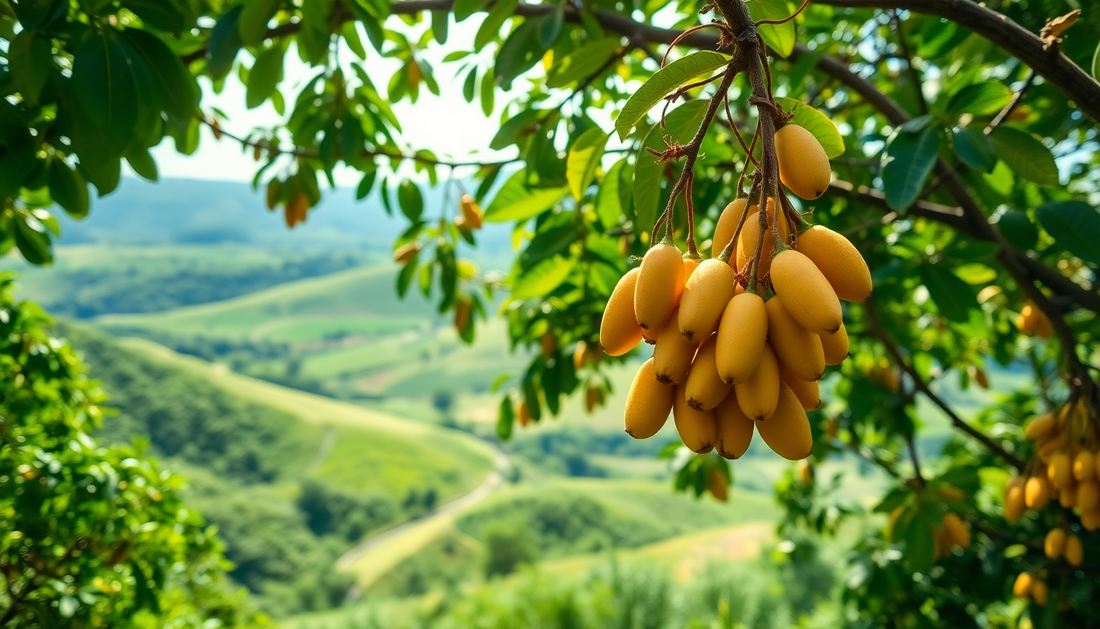
Unlocking the Secrets of Bountiful Cashew Harvests: A Guide to Optimizing Nut Production
As a passionate gardener, I've always been fascinated by the intricacies of cultivating cashew trees. These resilient plants, native to tropical regions, have a unique charm that captivates both seasoned horticulturists and novice green thumbs alike. However, one common challenge that many cashew growers face is the frustration of low nut yields. If you've found yourself in this predicament, fear not – this comprehensive guide will delve into the underlying reasons behind your cashew tree's reluctance to produce a bountiful harvest, and provide you with the insights and strategies to unlock its full potential.
Understanding the Cashew Tree's Needs
Cashew trees are hardy, drought-tolerant plants that thrive in warm, humid climates. They require well-drained, nutrient-rich soil to flourish, and can be sensitive to environmental factors such as temperature, rainfall, and soil pH. One of the primary reasons for poor nut production may be a mismatch between the tree's needs and the growing conditions in your garden or orchard.
Soil Composition and pH
Cashew trees prefer slightly acidic soil, with a pH range of 5.5 to 6.5. If your soil is too alkaline, it can impede the tree's ability to absorb essential nutrients, leading to stunted growth and reduced nut production. To address this, you can conduct a soil test and amend the soil accordingly, incorporating organic matter or acidifying agents as needed.
Nutrient Deficiencies
Cashew trees require a delicate balance of macronutrients (nitrogen, phosphorus, and potassium) and micronutrients (such as boron, zinc, and copper) to thrive. Deficiencies in any of these essential elements can hinder nut development and overall plant health. Regular soil testing and the application of a well-balanced fertilizer tailored to your cashew trees' needs can help rectify any nutrient imbalances.
Water Availability
Cashew trees are relatively drought-tolerant, but they do require consistent moisture, especially during the flowering and nut-setting stages. Irregular or insufficient watering can lead to flower and nut drop, ultimately reducing your harvest. Ensure that your cashew trees receive adequate water, either through natural rainfall or supplemental irrigation, particularly during critical growth phases.
Optimizing Pollination and Nut Set
In addition to addressing the fundamental growing conditions, there are several strategies you can employ to enhance the pollination and nut-setting process for your cashew trees.
Encouraging Pollinator Populations
Cashew trees rely on insects, primarily bees, for effective pollination. By creating a pollinator-friendly environment in your garden or orchard, you can increase the chances of successful pollination and nut set. This can be achieved by planting a diverse array of nectar-rich flowers and providing water sources for pollinators.
Timing of Flowering and Nut Set
Cashew trees typically flower and set nuts during specific seasons, which can vary depending on your local climate. Understanding the optimal timing for these critical growth stages can help you better manage your trees and ensure that they are receiving the necessary care and attention during these periods.
Pruning and Canopy Management
Proper pruning and canopy management can also play a crucial role in enhancing nut production. Removing competing branches, thinning the canopy, and maintaining an open, well-ventilated structure can improve light penetration and air circulation, which can positively impact flowering and nut set.
Addressing Pests and Diseases
Cashew trees, like any other plant, can be susceptible to various pests and diseases that can compromise their health and nut production. Identifying and addressing these issues promptly is essential for maintaining a thriving cashew orchard.
Common Cashew Pests
Some of the most common pests that can affect cashew trees include aphids, mealybugs, scale insects, and various caterpillar species. These pests can feed on the leaves, stems, and developing nuts, leading to stunted growth, defoliation, and reduced nut yields. Implementing integrated pest management strategies, such as the use of organic pesticides or the introduction of beneficial insects, can help control these pests effectively.
Fungal and Bacterial Diseases
Cashew trees can also be susceptible to various fungal and bacterial diseases, such as anthracnose, powdery mildew, and bacterial blight. These diseases can cause leaf discoloration, premature leaf drop, and even nut rot, ultimately impacting nut production. Maintaining good sanitation practices, using disease-resistant cultivars, and applying appropriate fungicides or bactericides can help mitigate these disease-related challenges.
Patience and Persistence
Cultivating a thriving cashew orchard is a journey that requires patience, persistence, and a deep understanding of the plant's needs. By addressing the fundamental growing conditions, optimizing pollination and nut set, and vigilantly managing pests and diseases, you can unlock the true potential of your cashew trees and enjoy bountiful harvests for years to come.
Remember, every garden and orchard is unique, and the strategies that work best for your cashew trees may differ from those of your neighbors. Embrace the learning process, experiment with different techniques, and be prepared to adapt your approach as you gain more experience. With dedication and a keen eye for detail, you can transform your cashew trees into a reliable and abundant source of delicious nuts.
Happy gardening, and may your cashew harvests be plentiful!
References
- "Cashew Production Guide." University of Florida IFAS Extension, https://edis.ifas.ufl.edu/publication/HS1277.
- "Cashew Nut Production." Food and Agriculture Organization of the United Nations, http://www.fao.org/3/y4431e/y4431e.pdf.
- "Cashew Cultivation: A Practical Guide." International Crops Research Institute for the Semi-Arid Tropics, https://www.icrisat.org/cashew-cultivation-a-practical-guide/.
- "Cashew Pests and Diseases." Cashew Information Portal, https://www.cashewinfo.com/cashew-pests-and-diseases.html.
- "Optimizing Cashew Nut Yield." Cashew Export Promotion Council of India, https://www.cashewindia.org/optimizing-cashew-nut-yield.html.







No comments